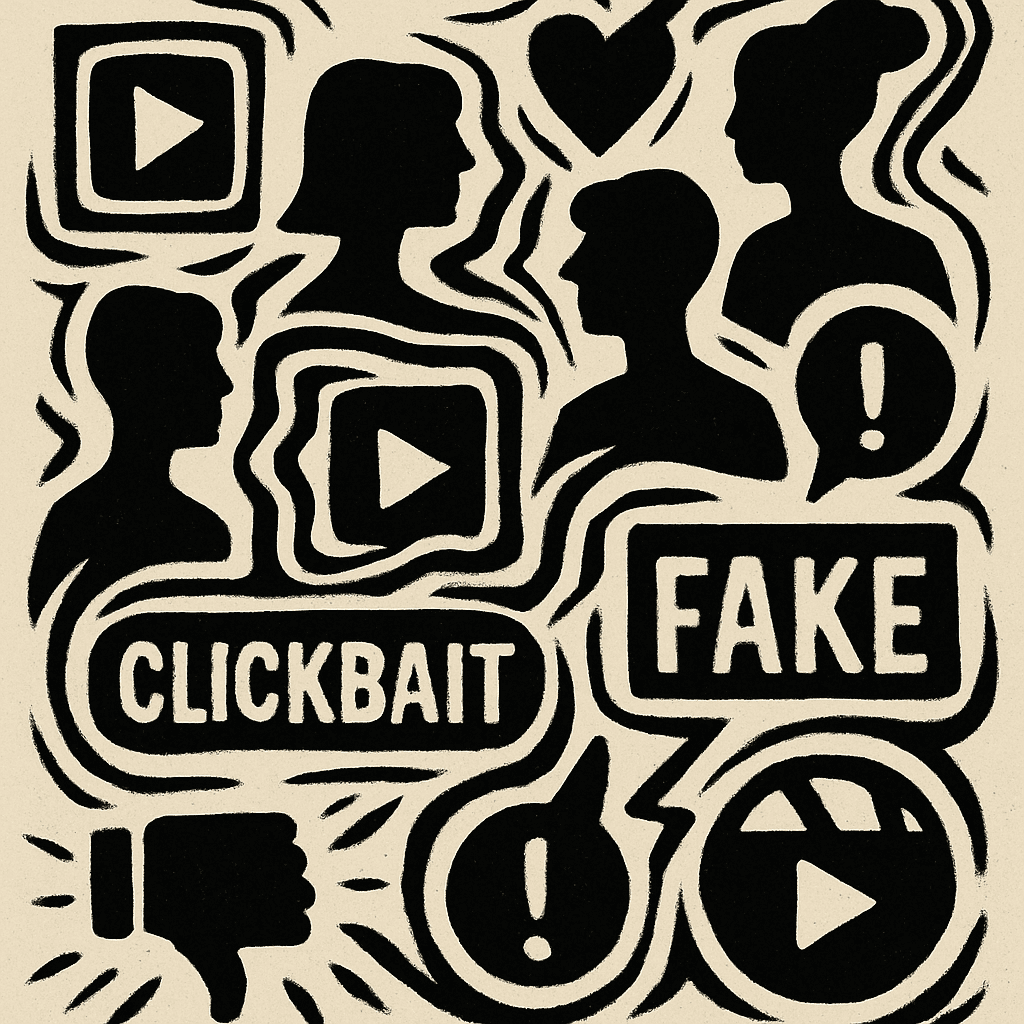By The Milk News Desk
Silicon Valley – August 18, 2025
In an era where 38.5% of Instagram’s feed consists of Reels and millions turn to TikTok for daily updates, a disturbing trend is emerging: your trusted influencers may be spreading misinformation, often without even realizing it. Recent studies reveal the alarming extent to which clickbait tactics are fueling the spread of false information across short-form video platforms.

The Misinformation Epidemic: By the Numbers
The scale of misinformation on popular platforms is more extensive than most users realize. A comprehensive study by NewsGuard found that nearly 20% of videos shown as search results on TikTok contain misinformation when users search for significant news topics, including COVID-19 vaccines, elections, and major current events. Even more concerning, these misleading videos often appear within the first five search results.
Meanwhile, a groundbreaking University of Sydney study published in JAMA Network Open analyzed almost 1,000 posts from Instagram and TikTok influencers with approximately 200 million combined followers. The findings were startling: researchers discovered that influencers were promoting “overwhelmingly” misleading information about medical tests.
Health Misinformation: A Particularly Dangerous Trend
The health sector has become a breeding ground for influencer-driven misinformation. The Sydney study revealed that:
- 85% of health-related posts failed to mention any test downsides or risks
- Only 6% of posts included medical evidence
- Over two-thirds of influencers had financial incentives to promote the medical tests they were discussing
These influencers were promoting controversial medical screening tests like full-body MRI scans, genetic testing claiming to identify early signs of 50 cancers, and gut microbiome tests—procedures that experts say have limited evidence of benefit in healthy people and could lead to overdiagnosis.
The Algorithm Advantage: Why Misinformation Spreads Faster
Instagram Reels aren’t just popular—they’re algorithmically favored. The platform’s algorithm ensures that Reels generate twice as many impressions as other post types and receive 22% more interactions than standard video posts. This algorithmic boost means that misleading content in Reel format can reach exponentially more people than traditional posts.
The rapid-fire nature of short-form content also plays a role. Unlike longer-form content that allows for nuance and fact-checking, Reels encourage quick consumption and immediate sharing, creating an environment where “bad news travels quickly” and misinformation can spread faster than corrections.
The Creator Crisis: Lack of Fact-Checking Standards
A UNESCO report uncovered a fundamental problem in the influencer ecosystem: two-thirds of digital content creators failed to perform even basic fact-checking before sharing information. Additionally, the majority of these creators are unfamiliar with regulatory frameworks and international standards relating to digital communications.
Research by Pew found that 77% of news influencers have no past or present affiliation with a news organization, meaning they lack the training and resources typically available in traditional newsrooms. Without accountability to media regulators, there are few safeguards when influencers inadvertently share misinformation.
The Financial Incentive Behind False Claims
The rise of what researchers call the “Disinformation Economy” has created financial incentives for spreading misleading content. Clickbait generates ad revenue, and AI tools now make it easier than ever to produce high volumes of engaging but false content. Some creators may not be politically motivated at all—they’re simply chasing profits through viral misinformation.
Red Flags to Watch For
Based on the research findings, here are warning signs that your favorite influencer might be spreading misinformation:
- Making health claims without citing medical evidence (94% of health posts lack scientific backing)
- Promoting products or tests without mentioning risks (85% fail to mention downsides)
- Using dramatic headlines with promises that seem too good to be true
- Lacking professional credentials in the topics they’re discussing
- Having obvious financial incentives for their recommendations
Protecting Yourself in the Age of Influencer Misinformation
While platforms work to address these issues, viewers must become more discerning consumers of content:
Verify Before You Trust: Cross-reference health, financial, or news information with reputable sources before acting on influencer advice.
Check Credentials: Look for actual expertise and professional affiliations, especially for medical or financial content.
Be Skeptical of Sensational Claims: If something sounds revolutionary or too good to be true, it probably requires more investigation.
Consider the Source: Remember that most influencers lack traditional journalism training and fact-checking resources.
The Path Forward
The influence wielded by social media creators comes with responsibility—both for the creators themselves and the platforms that amplify their voices. As Instagram’s ad revenue continues to surge by 24.4% in 2024, driven largely by Reels, the pressure to create engaging content will only intensify.
The solution isn’t to stop following influencers entirely, but to approach their content with the same critical thinking you’d apply to any other information source. In a world where engaging content often overshadows accurate content, maintaining a healthy skepticism might just be the most important digital literacy skill of our time.
Your favorite influencer might not be intentionally lying, but the system they operate within—driven by algorithms, ad revenue, and engagement metrics—creates powerful incentives for misleading content. The question isn’t whether you can trust influencers, but whether you can trust yourself to fact-check what they’re telling you.
